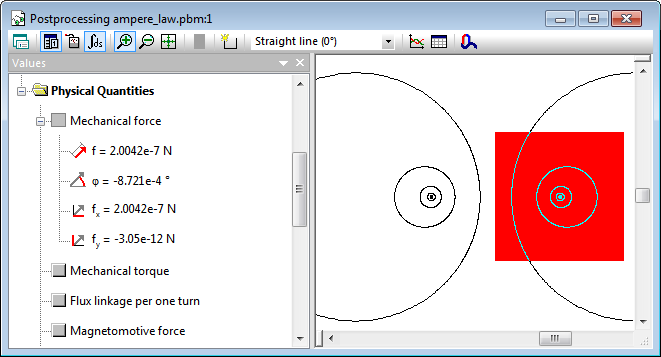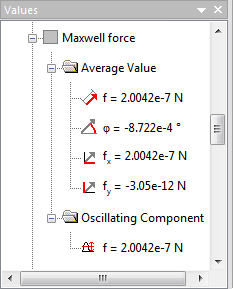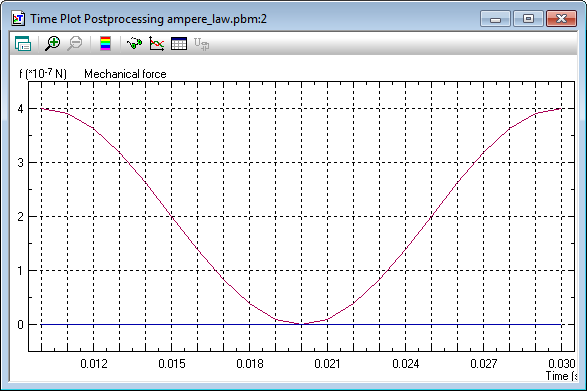Ampere's force law
QuickField simulation example
This verification example compares the force of attraction between two thin parallel current-currying wires given by Ampere's law and calculated in QuickField using three formulations: DC magnetics, time harmonics and transient magnetics.
Geometry
Given
I = 1 A - current of each wire;
f = 50 Hz - frequency in time harmonics and transient magnetics problems;
R = 1 m - distance between the wires.
Task
Calculate interaction force (per meter of length) between two wires and compare with the value given by the Ampere's force law.
Solution
Currents are set as linear ones. This way the model completely corresponds to Ampere's formulation.
In the time harmonics problem peak amplitude value of current is set √2·I.
In the transient magnetics current is set via formula I(t) = √2·I · sin(2·180·50·t).
According to the Ampere's law* the force of the interaction between two parallel wires is determined as:
f = 2·(μ0/4π) · I·I / R [N/m]
Results
Ampere's law: f = 2·(μ0/4π) · 1·1/ 1 = 2·10-7 [N/m]
Magnetostatics: f = 2.00·10-7 [N/m]

Time harmonics: f = 2.00·10-7 [N/m]

Transient magnetics: time-average force f = 2.00·10-7 [N/m]
| Time | Current | Force |
| 0.01 s | 2 A | 4.0092·10-7 N/m |
| 0.015 s | 1 A | 2.0046·10-7 N/m |
| 0.02 s | 0 A | 6.255·10-22 N/m |

*Wikipedia: Ampere's force law.
- Video: Ampere's force law. Watch on YouTube.
- View simulation report in PDF
- Download simulation files (files may be viewed using any QuickField Edition).